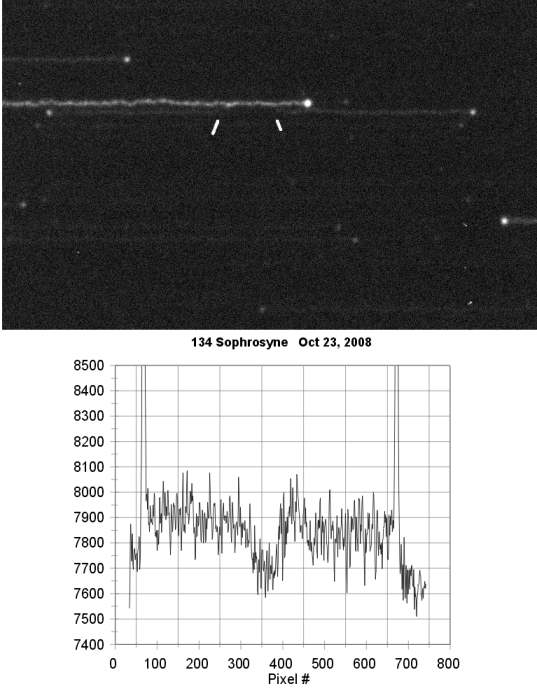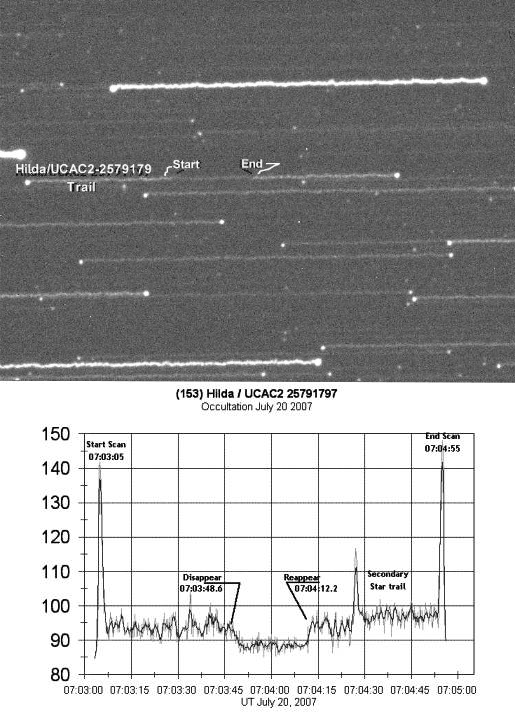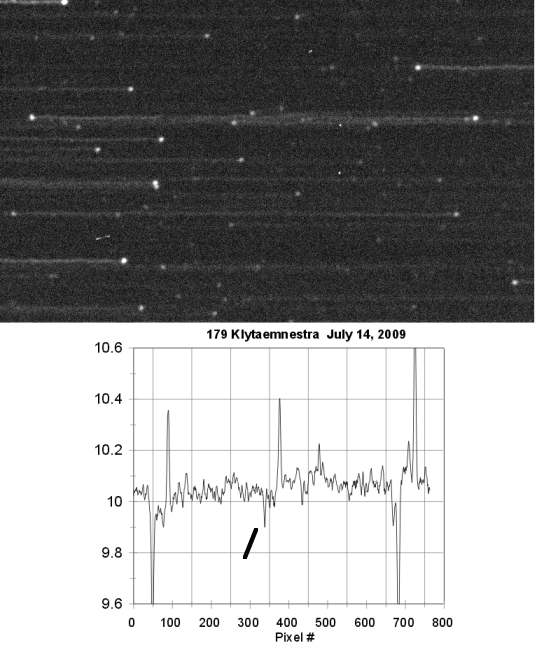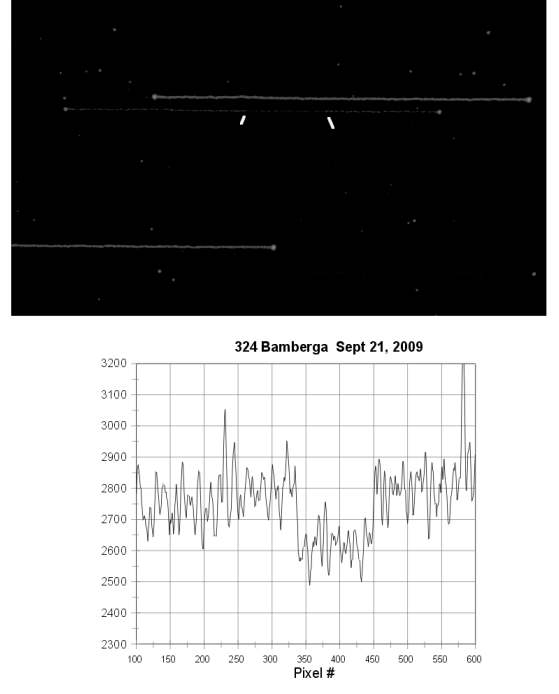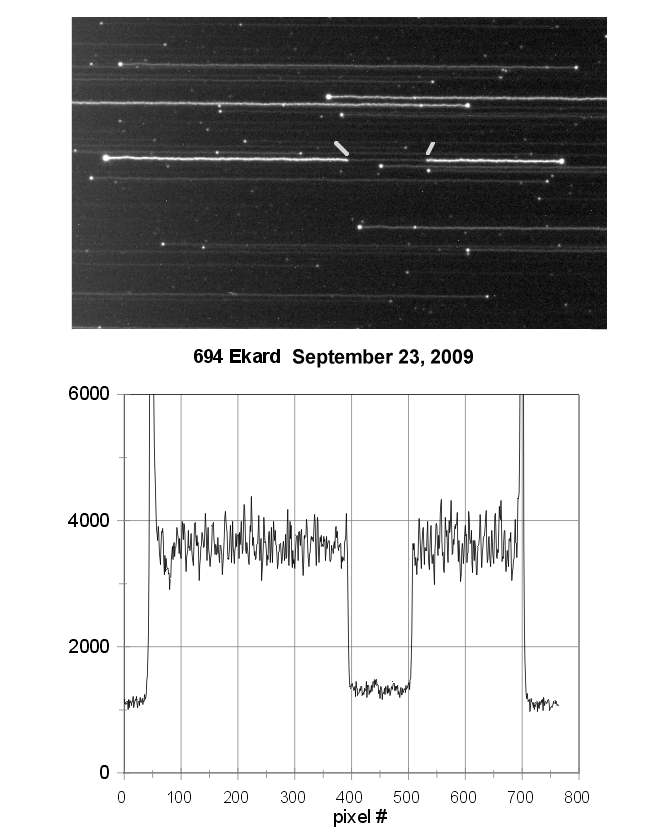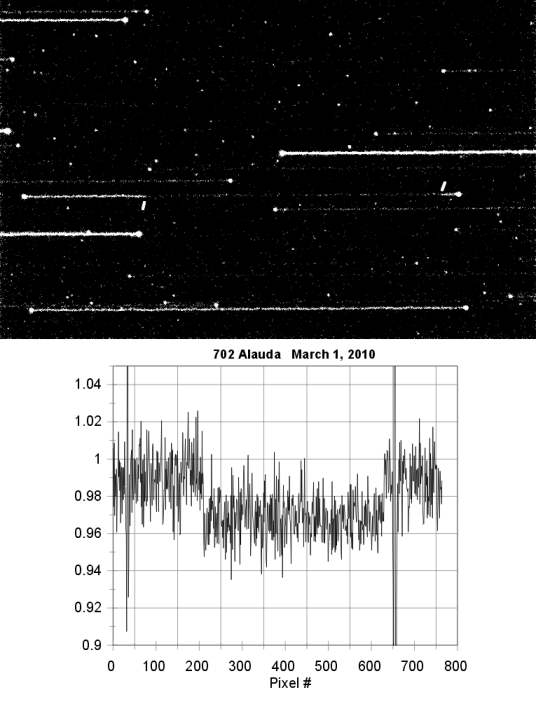and
Check out John Broughton's web site for detailed instruction
on using drift scan to record occultations
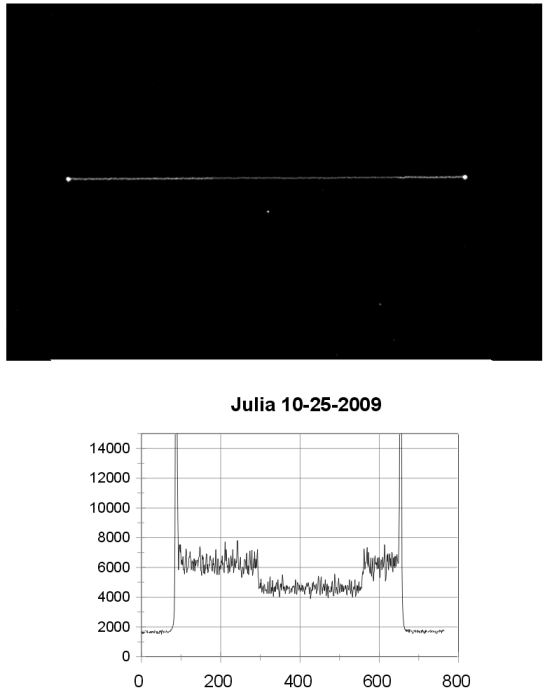
To measure an occultation with a CCD camera (Drift Scan)
one takes an extended exposure with the telescope tracking turned off.
This gives a "drift trail" for each of the stars in the image.
The occulted star's trail will have a break or reduction in brightness
as the star is occulted.
Once the image is obtained a program that can measure a spectrum is used
to measure the drift trail. I use AIP4Win or Vspec, both work fine.
The essence of measuring an asteroid occultation is getting accurate timing.
John Broughton's web page covers this in detail.
For SBIG camera's there is a new tool for timing.
CCDOps-5.55 can connect to a Garmin GPS18x-USB unit.
This allows CCDOps to mark the beginning and ending time
of an exposure accurate to better than 0.01 second.
